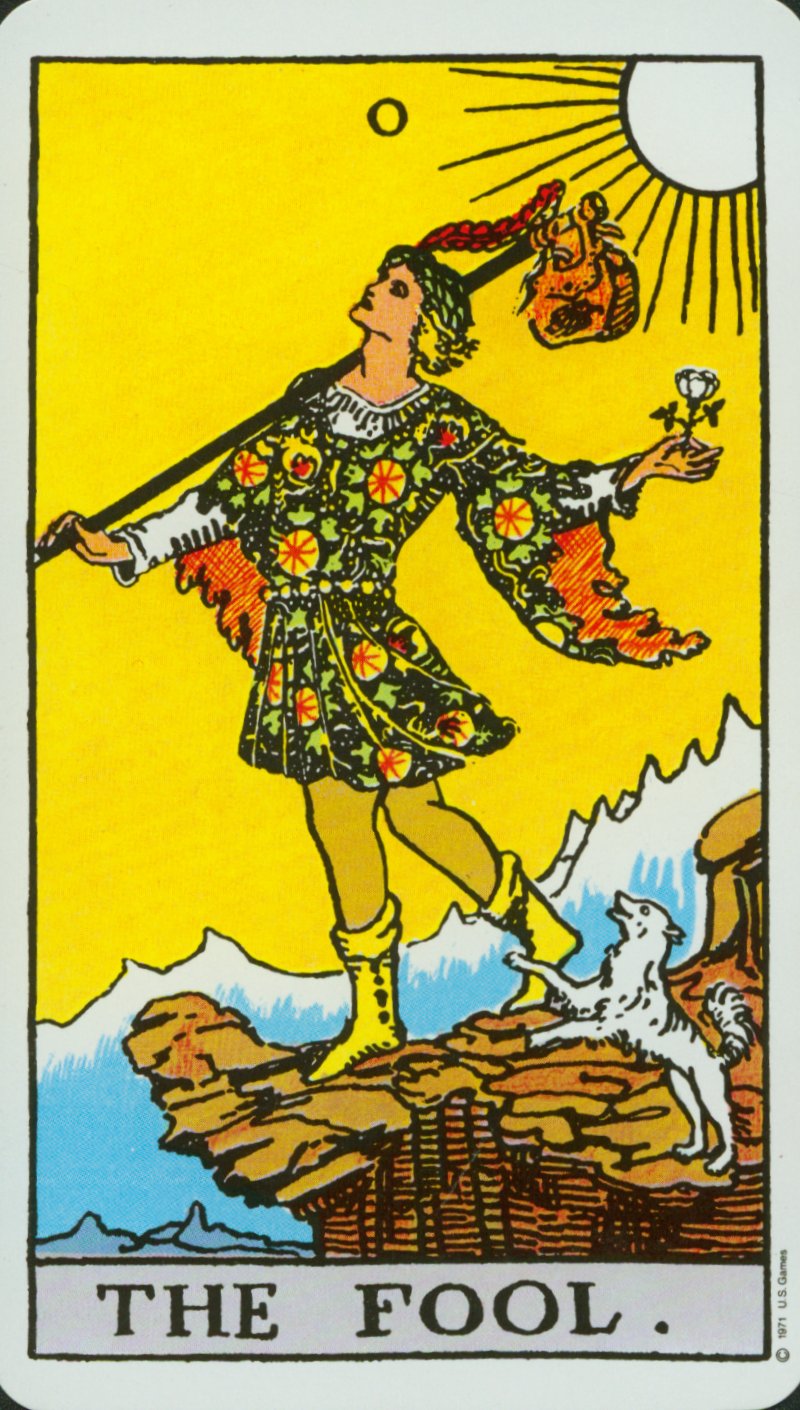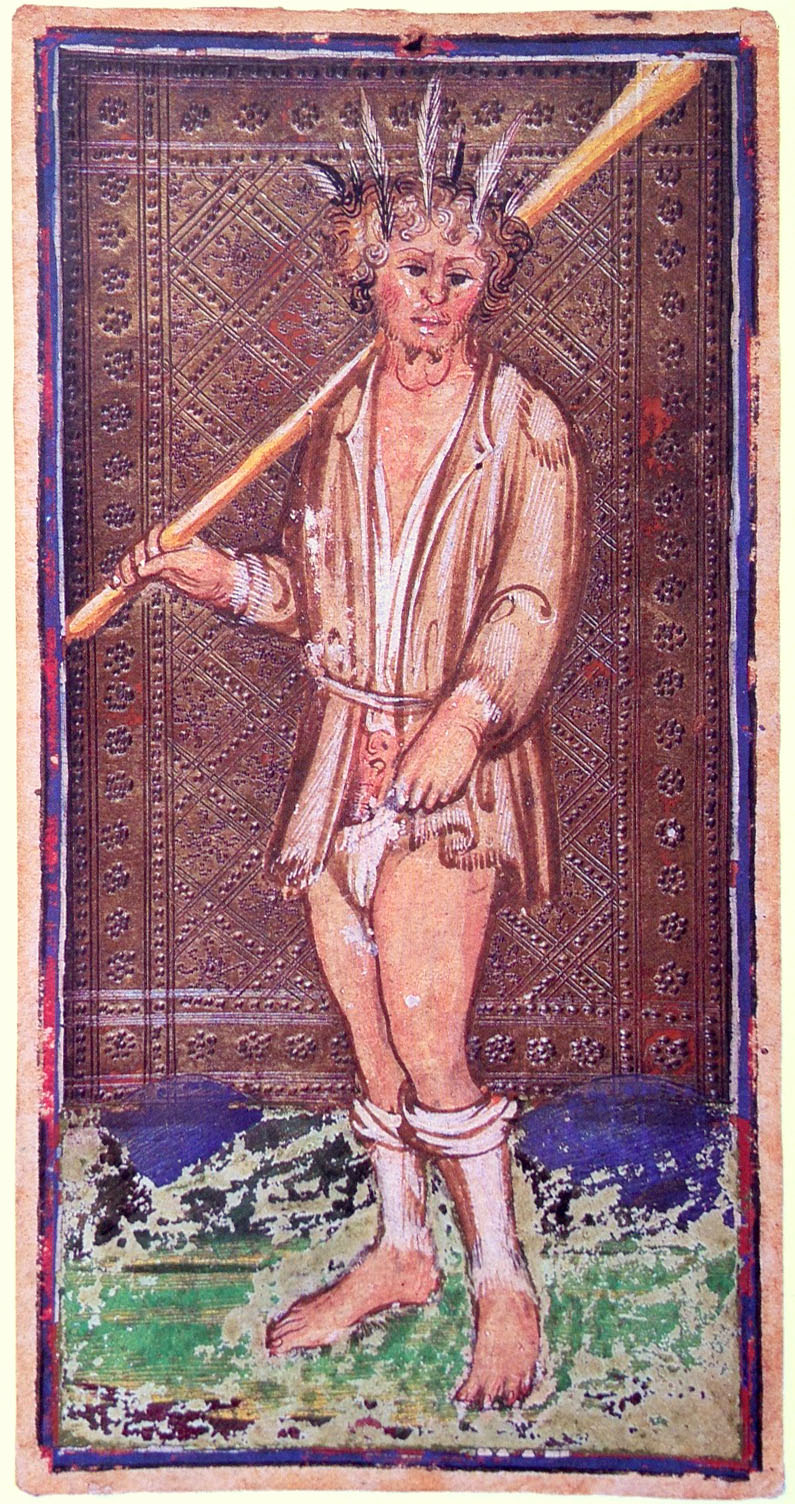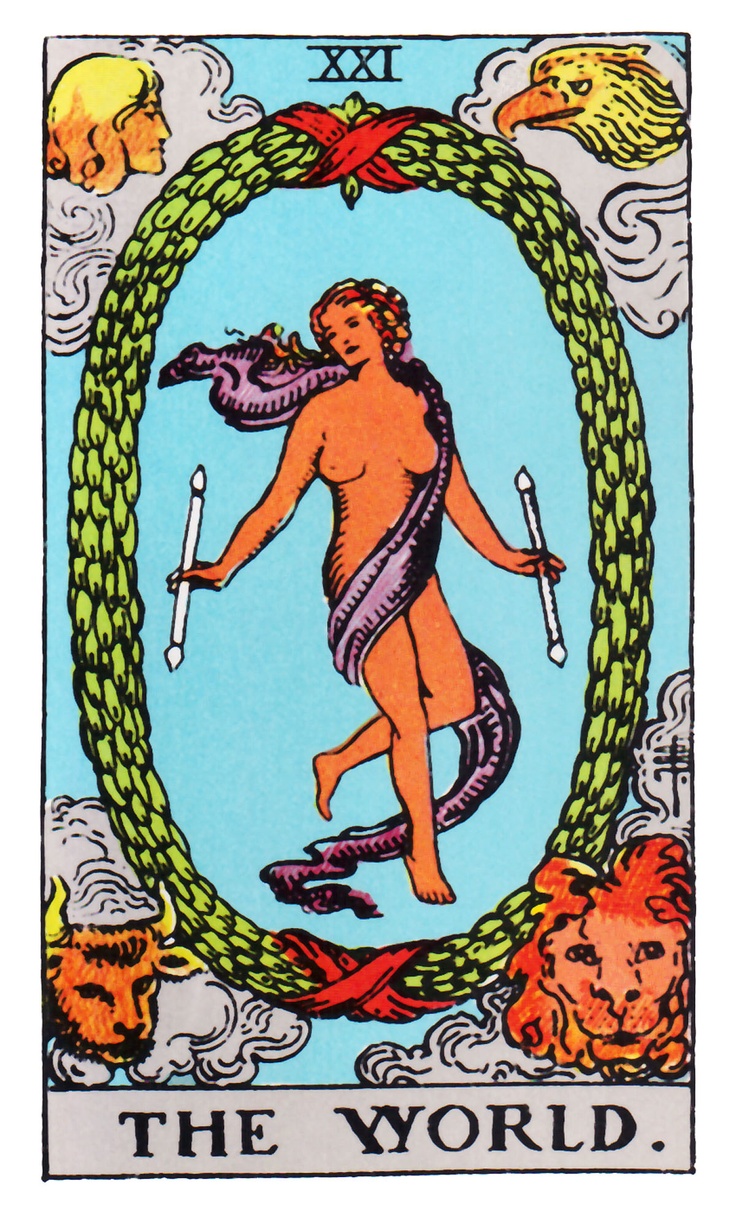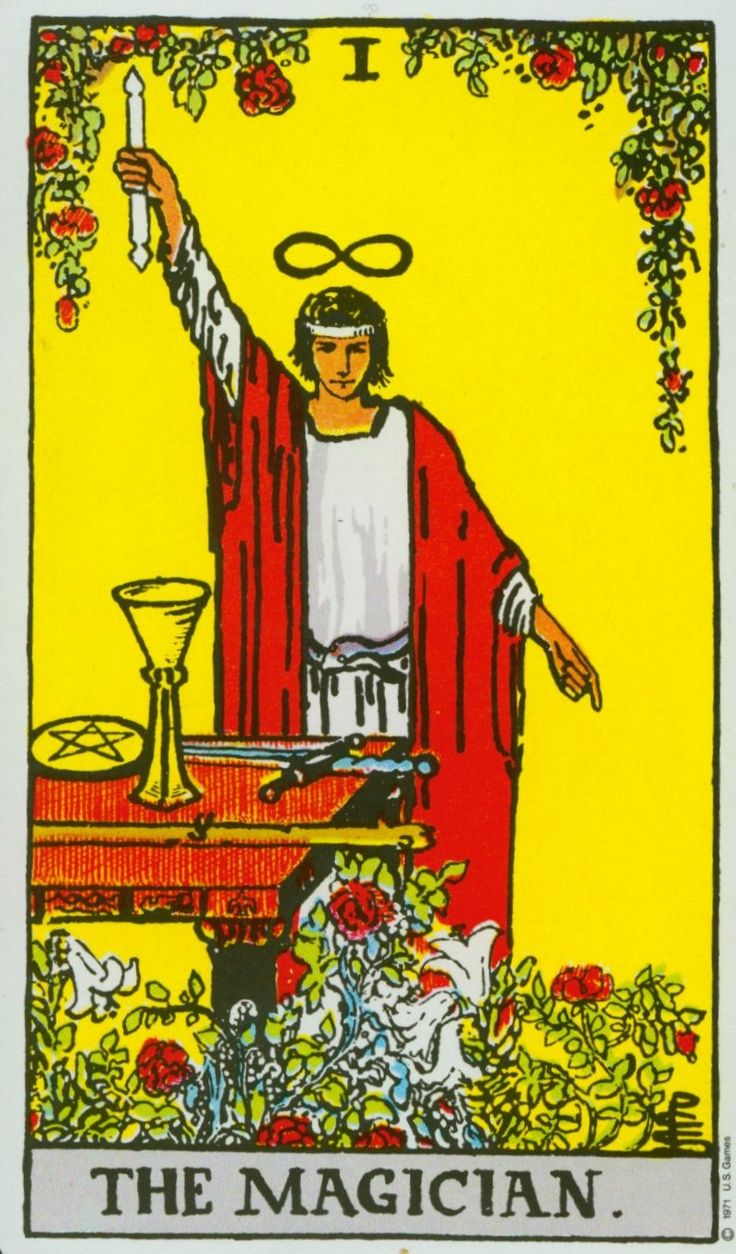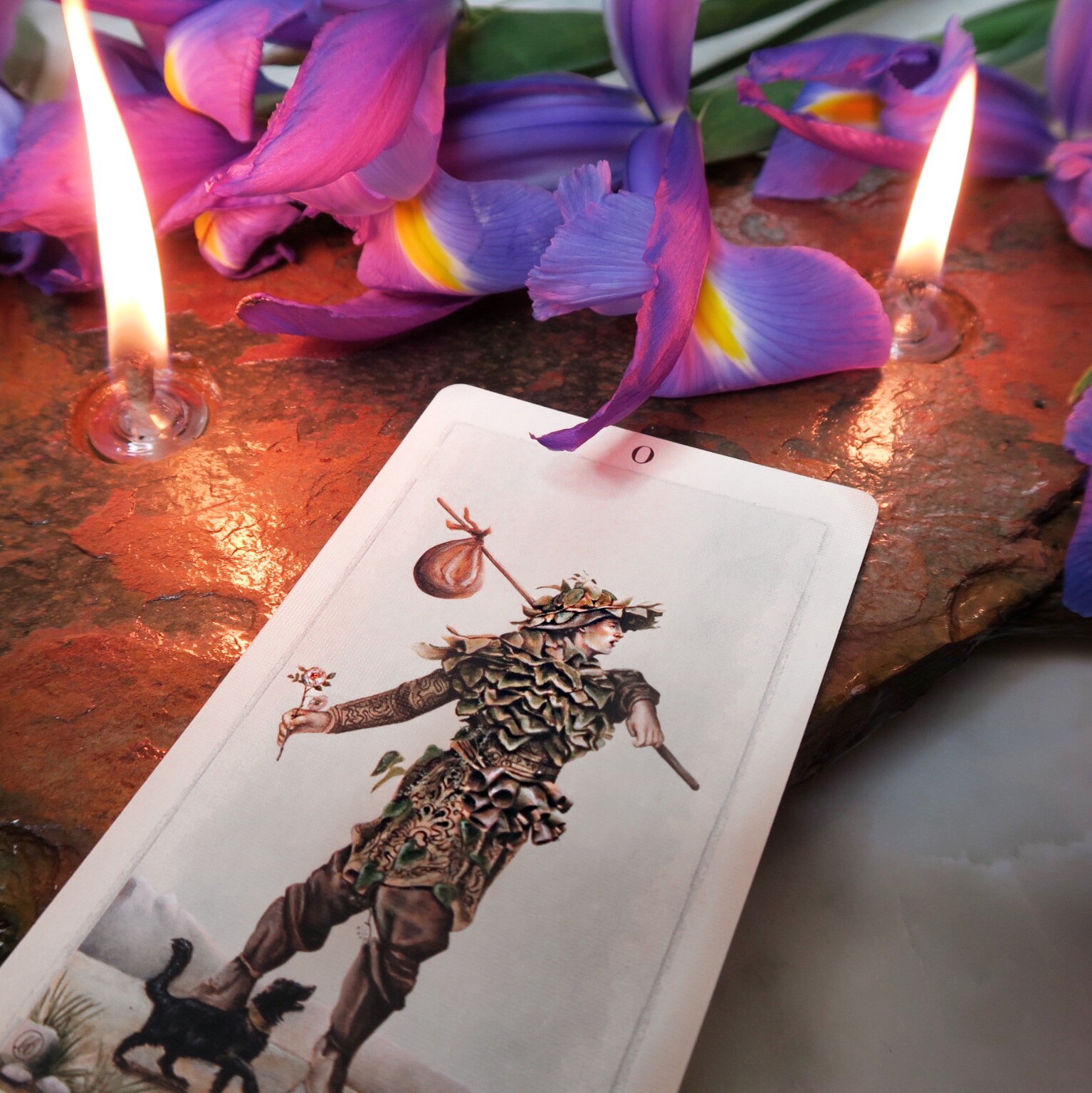Uncovering the Secrets of the Fool Card
For many people the fool card represents things like new beginnings, a childish sense of enthusiasm, naivety, and even risk-taking. This is of course all true but by looking at both the evolution of this card and the significance of the symbolism we can really get a better understanding of what The Fool card really represents.
The early tarot decks, The Fool is titled Le Mat in French, or Il Matto in Italian. These archaic words can mean either "the madman" or "the beggar.” The problem is that these two words definitely bring to mind two different things. Also, these are surely not the first words that come to mind we look at what might be the most popular image of the Fool from the Rider-Waite deck originally published in 1910.
The Rider Waite fool with his fancy clothing definitely does not make you think beggar. However, you could possibly describe this image of the Fool as a Madman as he looks like he is without a care in the world. And here his “madman’ like qualities might not necessarily be a bad thing. There is a sense of great courage in the leap of faith he is about to take off the cliff, and perhaps he knows that this leap is a necessary part of his journey. After all, there is definitely a thin line between madman and genius. And indeed, perhaps The Fool here too represents the concept of “divine madness.” This idea of “divine madness” is not unique to the character of The Fool and it can be found throughout narratives in Christianity, Buddhism, and countless other spiritual traditions.
On the other hand you have the idea that The Fool represents Il Matto or Le Mat in terms of a beggar. And yes, the earliest interpretations of The Fool do show him as a beggar or a lowly Jester. Here in these early interpretations, the childish optimism of the Rider-Waite Fool is lost. And instead we get something much more real and perhaps fearful. The early interpretations of the Fool show the trepidation we experience whenever we start out on a new journey or adventure.
In some intrepretations, like the Visconti Sforza, The Fool is shown wearing ragged clothes and stockings without shoes, clear evidence that he has fallen upon hard times. This hits upon our own fears of financial ruin when we decide to venture out on our own.
The Tarot de Marseille Fool shows a man in classic Jester form. In this image a dog has humorously pulled down his pant leg making the Fool even more of a laughing stock among his peers. This of course mirrors our own fears of ridicule when we decide to forge our own paths.
So then, how are you as a reader meant to interpret this card? In the Rider Waite Fool, the risk taking is encouraged and is seen as a beautiful first step on our path to enlightenment. However, the earlier decks show it more as a cautionary warning that by going along this path you will inevitably run the risk of ending up worse then where you started.
This is why deck selection is a vital component when doing a reading. If a Rider-Waite Fool shows up in a reading you might advise to go ahead and begin your new project and embrace the enthusiasm and excitement you’re feeling at the moment. However, if you’re reading with the Visconti Sforza, you might instead recommend that more planning is necessary before starting this new journey so that you will have all the resources you need to be successful.
Another way to get a better handle on how to interpret this image is by relying on your own intuitive abilities. If you as a reader feel a sense of joy when you pull this card, then likewise a more optimistic interpretation makes sense and vice versa. You can also use your intuition by paying close attention to which specific symbol in the card first catches your eye or seems to draw you in. This symbol, perhaps, holds a better clue of what aspects of the card you should emphasize in your interpretation.
So next let’s review some of the symbols in the Rider-Waite Fool and how they can enhance your interpretation. Let’s start at the top with the number zero. Because we are starting with zero as opposed to one, it seems to set this card completely apart from the other Major arcana cards. And zero, while yes is a powerful number, it is also the shape of a circle. And the circle here reminds us that cycles represent a foundational component of tarot as a whole. There is a sense that we, like the Fool are in a constant cycle of completion and beginning. The major arcana ends with The World card, the globe representing another cycle. It reminds us that the Fool then is not just about beginnings he also represents the completion of a previous achievement. The circle is perhaps also foreshadowing another powerful symbol we see on the following card, The Magician. The Magician wears an Ouroboros belt, yet again another representation that this cycle is infinite.
Moving to the bottom of the card you can see the dog warning the fool about the cliff ahead. While earlier decks show the dog as an active member in the beggar's or jester’s humiliation, you definitely don’t get that feeling when you look at the Rider Waite dog. Images of dogs in general make us think of loyalty. You can go as far back as The Odyssey, where Odysseus had a loyal dog named Argos who was the only one who recognized him when he returned home from his travels. Perhaps in this instance, it shows the dog’s ability to understand the essence of who we are even after we’ve evolved and changed. You get the sense that this dog, too, will still be loyal to Fool after he undergoes his transformative journey.
Dogs are also seen as symbols of companionship. The specific dog represented here is a Maltese, a breed favored by the wealthy during the Renaissance. You can see this type of lap dog featured prominently throughout many portraits during this time. Perhaps this suggests that the Fool also needs a companion on his journey. So if you feel intuitively pulled to the image of the dog in this card, you likewise might suggest during the reading that it would be a good idea to have a partner or friend help you out as your begin this new journey.
The knapsack in the top left of the corner reminds us of the things we ourselves carry in our daily lives. On the one hand it can allude to materialism. While the fool appears to be nicely dressed, he oddly carries very little in this bag. Perhaps a suggestion that on a spiritual journey one needs little in terms of material items. The specific image on the bag is not clear, though some say it is the head of an eagle. Again the idea that by removing our own physical attachments to the world, we can take flight on our own more profound journey.
The rose the fool holds is white, the color of purity, and assures us this the journey while difficult, will also be beautiful. In addition, the white color encourages us to clear our own minds as well in order to forge a greater intuitive connection to this card.
There are many other symbols in this image but I hope this gives an idea of how an understanding of symbolism can bring further context and complexity to a reading. To fully understand the meaning of the Fool as a reader, you too need to go on your own journey of development. Tarot study is so fascinating to me because it combines the study of history and symbolism with the more mysterious aspect of cultivating your own intuitive abilities.
When it comes to interpreting this card for day to day situations, there are several insights you can make. Since the Fool card is all about new beginnings, it can herald that we too are about to start something new in our lives. This would be something we are excited about, but perhaps we are also a bit naive about what to expect. There are so many times when we take on the role of The Fool in our lives. For example, when I left for college many years ago I was starting out on a new adventure. Physically I travelled across the county to go to college and had to make all new friends. Like the Fool, I was excited beyond belief but also naive about how much work it would entail. There are so many examples of moments when we experience these qualities in our own lives, like perhaps you’re starting a new career, or maybe you just had a baby.
In a more broader sense the fool can represent the beginning of our own spiritual journey. Some refer to the whole of tarot in general as “The Fool's’ Journey” as if the fool is like the protagonist in a great story and the other cards of the major arcana represent people he will meet and learn from as he goes along his journey. Perhaps we too are the fool here - we are the protagonists in the story of our own spiritual development.
Whichever way you choose to interpret The Fool in a reading, one thing is certain, that this new journey we’re on - while difficult - will definitely be worth it in the end.
How do you like to interpret the Fool Card? Is there a particular symbol in that has always stood out to you in this image? Share your thoughts in the comments below.


